
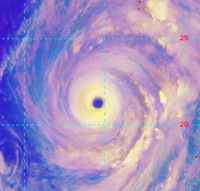
Hagabis, a category 5 Super Typhoon for much of the first half of this week, is forecast to track towards Japan with a potential landfall on Saturday morning October 12. Fortunately, the forecast calls for Hagabis to weaken to a category 3 typhoon by landfall. If the forecast for Hagabis verifies, it would be the sixth typhoon of the 2019 season to directly impact Japan and one of the five strongest ever at category 3 strength. Moreover, the track of Hagabis is very similar to that of Typhoon Faxai, which made landfall just east of Tokyo on September 9, 2019. Hagabis has been a formidable typhoon traversing the west Pacific, rapidly intensifying from a tropical storm strength system to super typhoon category 5 status in 24 hours Sunday into Monday. Since then, Hagabis has maintained either high-end category 4 or category 5 strength for the last 72 hours. While records are incomplete for the West Pacific, the rate of strengthening for Hagabis is among the strongest ever recorded in the Pacific basin. As of Thursday evening local time, Hagabis remains a category 5 super typhoon with maximum sustained winds of 140 knots gusting to 170 knots. An exceptionally low central pressure of 904 mb, Hagibis is moving north-northwest at 13 knots and currently positioned 750 miles due south of Tokyo, Japan.
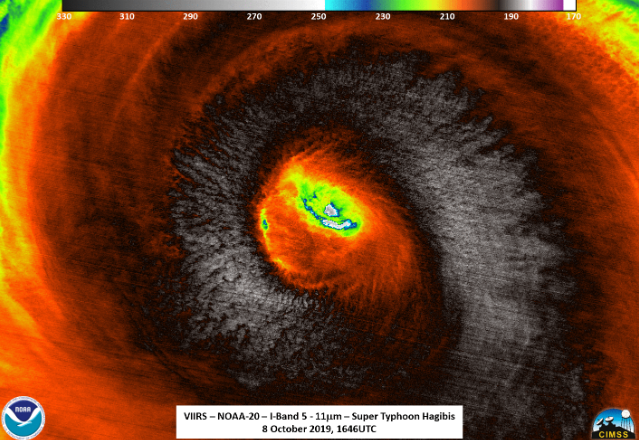
Visible satellite image of Super Typhoon Hagabis after attaining category 5 strength. Source: CIMSS/Univ. Wisconsin/NOAA The forecast track for Hagabis calls for the typhoon to track north-northwest over the next 48 hours, while traversing a tongue of high ocean heat content.
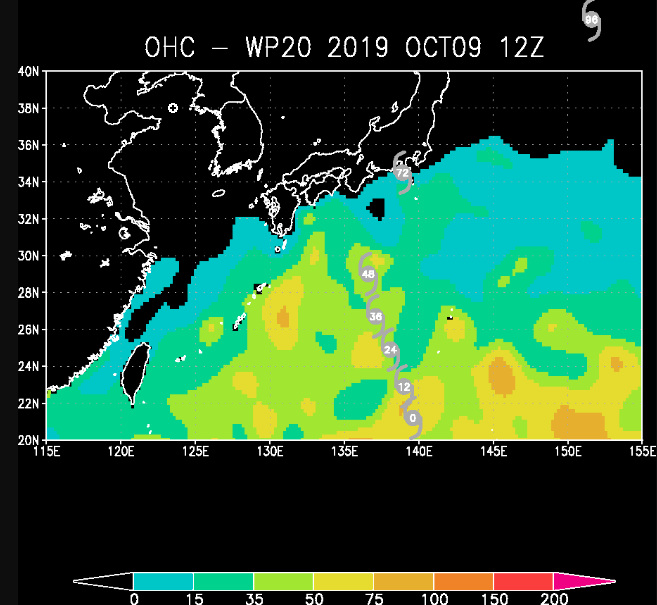
Ocean heat content with the forecast track of Hagabis. Source: CIRA/Colorado State University Accordingly, the Joint Typhoon Warning Center forecasts Hagabis to maintain category 4 or 5 strength through Friday morning while approaching Japan. Once Hagabis clears the region of high ocean heat temperature, wind shear should also start to disrupt Hagabis and turn the typhoon to the north and northeast Friday night. Currently, the forecast calls for landfall Saturday afternoon (local time Japan) as a category 3 typhoon.

Official track and intensity forecast of Super Typhoon Hagabis as of Thursday, October 10 06Z. Source: Joint Typhoon Warning Center As currently forecast, Hagabis appears to have the potential of a historic landfall for Tokyo. The spread of model guidance with regards to track is quite low, increasing the confidence in significant impacts for the Tokyo metro region. This is particularly true if the European model verifies with a direct landfall just west of Tokyo, placing the city in the right hand quadrant of the typhoon and the highest winds.
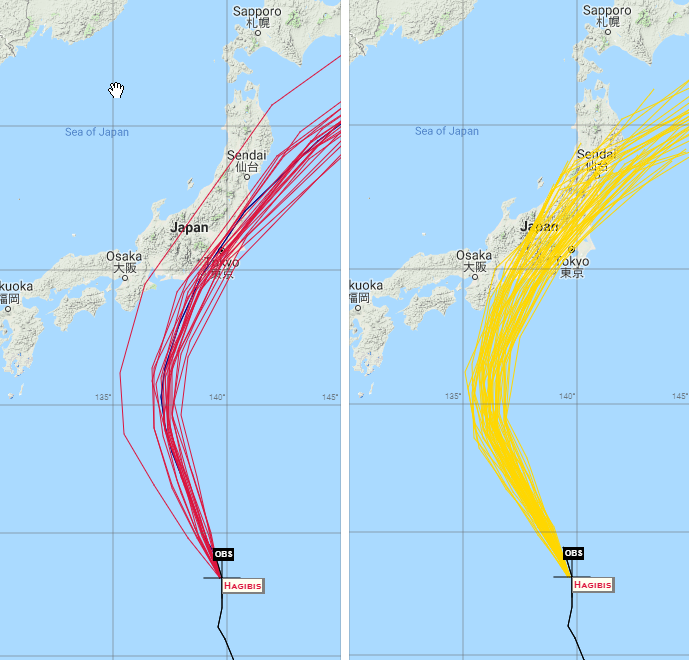
Spread in the ensemble members of the American/GFS model (red tracks, 21 members) and European model (yellow tracks, 51 members). Source: NOAA/RUC/HFIP A category three direct impact to Tokyo would be historic in nature. Since 1950, only four typhoons have tracked at category 3 strength within 100 miles of Tokyo. The most recent typhoon is Ma-On in 2004, making landfall further southwest over the city of Fujiomiya. Lucy in 1965,and two typhoons named Ida (1958 and 1966) are the other three typhoons portrayed in the map below. Typhoon Faxai made landfall as a strong category 2 last month, while Typhoon Jebi from 2018 made landfall further south in Osaka as a borderline category 2 typhoon.

All category 3 typhoons to track within 100 miles of Tokyo, Japan since 1950. Source: NOAA/CSC While exceptional winds and storm surge are the highest concerns given the current forecast of Hagibis, rainfall is also expected to be quite high. Totals in excess of 12" with isolated totals up to 20" are possible as Hagibis traverses Japan this weekend.
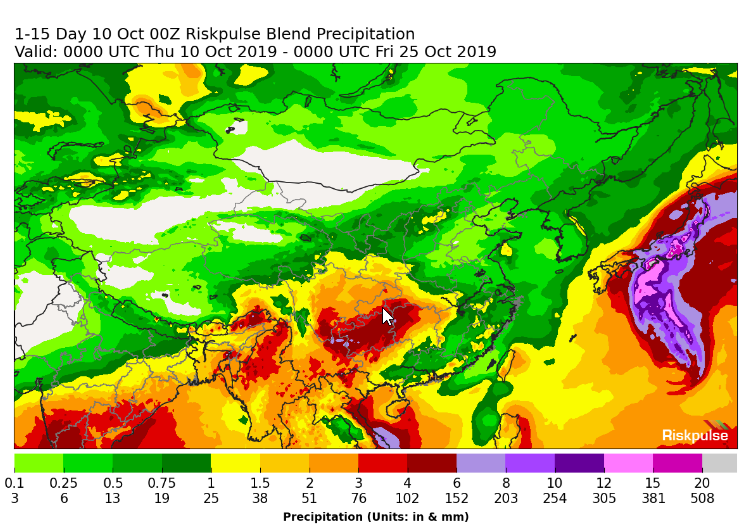
Rainfall totals for the next two weeks across East Asia, with the track of Hagibis clearly seen impacting Japan. Source: Riskpulse With the current official forecast from the Joint Typhoon Warning Center indicating the potential of a historic event, official forecast sources should be monitored as Hagibis tracks to Japan. The available websites will contain the most up to date information regarding Hagibis. Joint Typhoon Warning Center Japan Meteorological Agency Watches and Warnings Japan Meteorological Agency Radar West Pacific Satellite Imagery